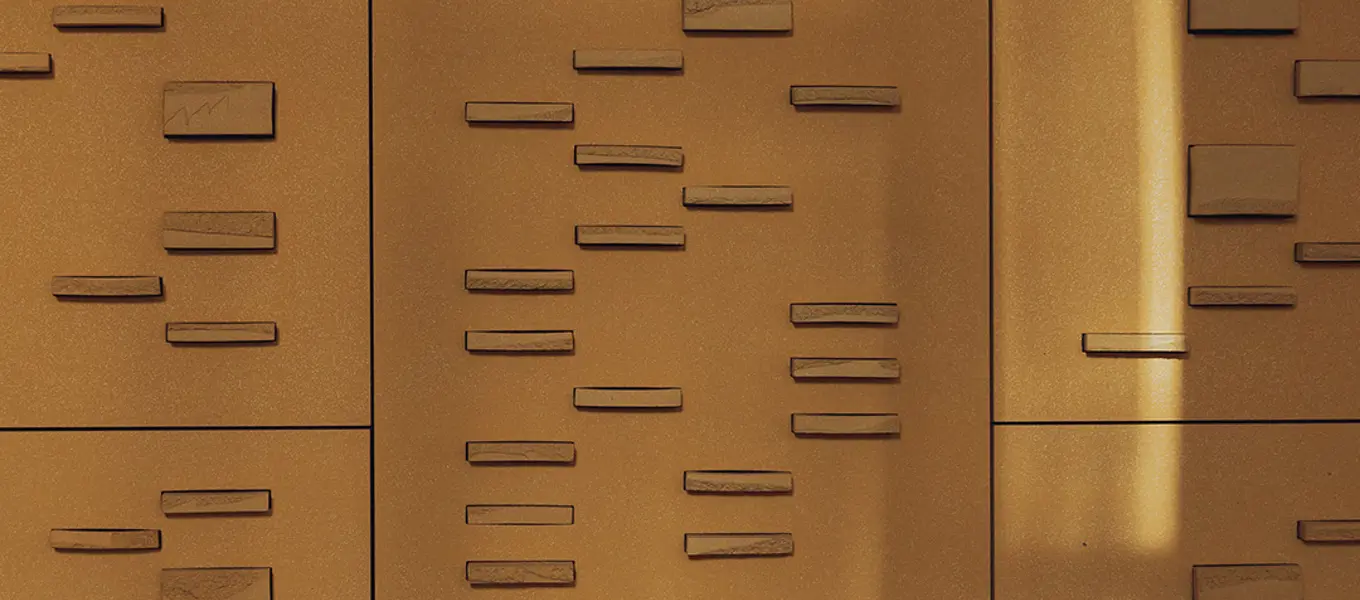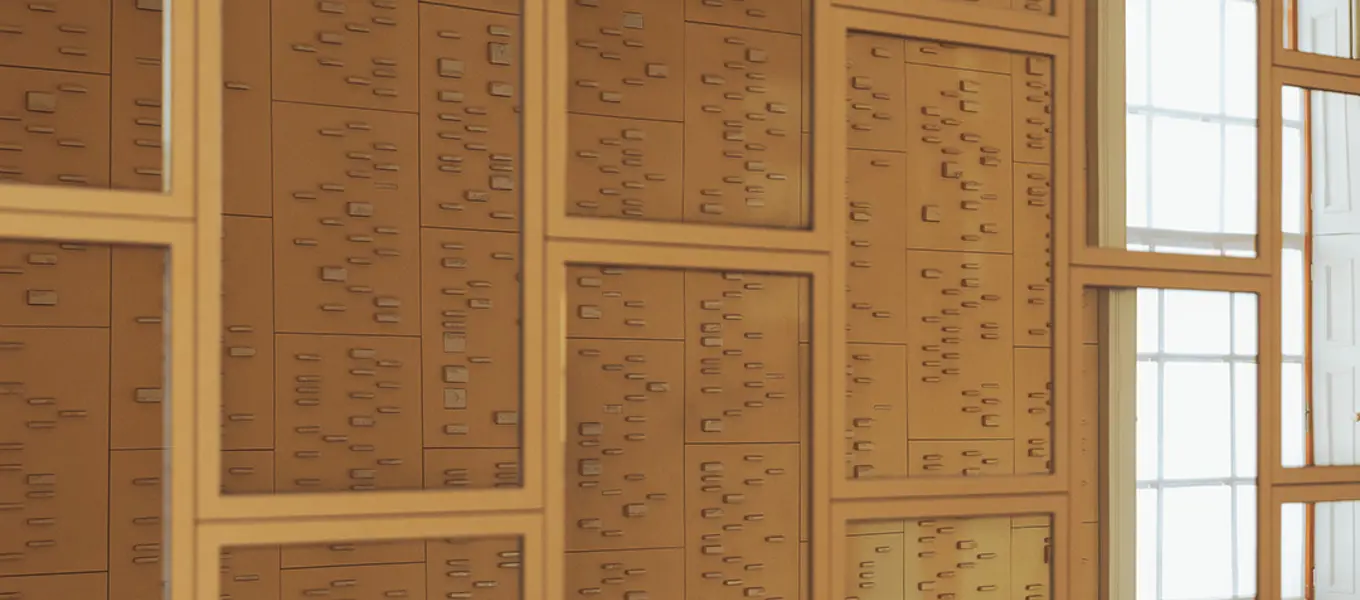The North Sketch Gallery was formed in 2009 from a series of small bedrooms and service rooms in order to provide a continuous route around the second floor for visitors.
The installation on the walls of 659 ochre coloured, handmade ceramic panels is the work of artist Jacob van de Beugel (b. 1977) and was completed in 2014.
A pupil of Edmund de Waal (b. 1964), van de Beugel was inspired to create a series of five abstract portraits using wall tiles when he was asked to create a ceramic space as a complement to the displays of historic ceramics in the cases.
Following several discussions with the family and Chatsworth House Trust he was commissioned to make the work in 2010. It forms the most significant single art installation at Chatsworth since the creation of the 6th Duke’s Sculpture Gallery in 1832.
The portraits are based on the mitochondrial DNA of the 12th Duke and Duchess, their son Lord Burlington and his wife Lady Burlington. Their DNA was sampled via mouth swabs which were sent to a lab for sequencing. The four columns of blocks on each panel represent the four nitrogen containing bases which make up the characteristic double helix of DNA.

Unique aspects of each individual’s DNA sequence are captured on these blocks using variations in colour and surface treatment, while glazed blocks are arranged in response to a subject that is important to each individual.
The 12th Duke chose his favourite walk around the garden at Chatsworth, and the Duchess chose her favourite piece of music, John Rutter’s ‘A Gaelic Blessing’. Lord Burlington asked to be shown surrounded by his family, while Lady Burlington chose a traditional stitching pattern she was taught as a child by her grandmother.
This unusual and creative take on the traditional portrait creates a unifying scheme of decoration down the south wall of the gallery.
The fifth portrait, which is on the central pier, metaphorically depicts Everyman, showing the DNA which we all have in common. Inserts of mirror in place of some of the blocks allows the viewer to see their own unique likeness reflected in the portrait. The north wall of the gallery is covered with ceramic framed mirrors which reflect the DNA panels and the light from the Inner Court on the south side.
“In the Everyman portrait, areas are highlighted by mirrors where the viewer or visitor becomes part of the portrait; in effect a self portrait of everyone. Highlighting the importance of visitors to Chatsworth, it is of significance that it is the central portrait, symbolic of our common humanity and of a more democratic age.”
- Jacob van der Beugel

Mirror reflections of a section of the portraits
Explore more...
Painted Hall
Used to welcome and impress guests, this was the largest and grandest room built by the 1st Duke.
Oak Room
This room was completely changed by the 6th Duke with the wood panelling he bought at an auction.
Chapel
This is the least changed room at Chatsworth, the 1st Duke employed the best artists to realise his designs.
State Drawing Room
The second room of the State Apartment, a suite of rooms intended to host a king.
State Bedchamber
One of the most private rooms in the State Apartment, this room was more lavishly decorated than all the others and features the State Bed.
Old Master Drawings Cabinet
This room was designed to display Old Master Drawings.
Oak Stairs/Leicester Landing
The stairs were created when the 6th Duke added the North Wing. They connected the old part of the house to the new.
Library and Ante Library
There are over 17,000 books in these two rooms. The whole Chatsworth book collection numbers around 40,000 volumes.
Great Dining Room
Built as part of the 6th Duke’s renovation, this room is still used for formal dinners.
Sculpture Gallery
Built by the 6th Duke, the gallery contains one of the foremost early 19th century contemporary collections of sculpture.
History of Chatsworth
Learn about the Devonshires and discover how they shaped the history of the house, garden and collection that we see today.
History of the garden
The garden evolved over nearly 500 years. Discover its history and the people who shaped it.
The Devonshire Collections
Discover highlights from the art, library and archive that make up the Devonshire Collections.
The House
Learn more about what's on in the house.



